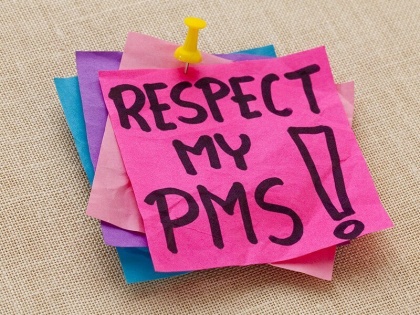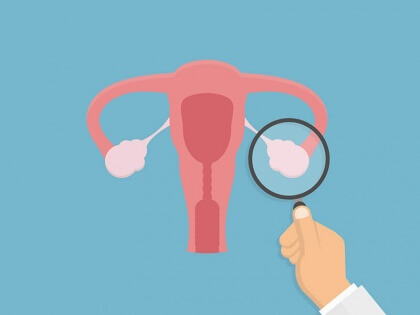Address:
470 Bronte St S Suite 202 Milton, Ontario L9T 2J4 Canada
WOMEN’S HEALTH
Women have a lot of things to keep track of when it comes to taking care of their health. A lot! From menstrual cycles and PMS, to fertility and pregnancy, women have unique challenges in staying healthy and balanced. Naturopathic medicine incorporates the best parts of Western physiology and natural healing methods to develop a treatment plan that addresses your women’s health concerns.
Polycystic Ovary Syndrome
Menstrual Cycle Issues & PMS

Many women experience pain or moodiness before or during their periods, which can interfere with daily life. Am I right lady? Pain with menstrual bleeding is called dysmenorrhea and can range from mild to severe. PMS is the term for symptoms that appear in the days leading up to your period. You can read more about Menstrual Cycle Issues and PMS.
Female Hormone Imbalance
For women, hormone imbalance is the term that describes the incorrect relationship between the two primary hormones, progesterone and estrogen, in the body. Usually, in the first 10-12 days of the menstrual cycle, only estrogen is produced in the female body. If ovulation occurs, then progesterone is produced by the ovaries. On or about day 28, both hormones drop, resulting in menstruation. However, if ovulation does not occur, women can still have the menstrual period, but the estrogen is never “balanced” by progesterone, which needs ovulation to trigger its production. This results in symptoms of hormone imbalance; estrogen is present, but progesterone production drops to shallow levels.
Variations in the estrogen/progesterone balance can dramatically affect health. Hormonal imbalances are also thought to play a major role in PMS, or premenstrual syndrome.
Women’s hormonal imbalances may result from aging, stress levels, a lack of exercise, poor nutrition, alcohol intake, poor sleep, synthetic hormone replacement therapy (HRT), and environmental toxins, called xenoestrogens, such as the pesticides DDT and dioxin.
Symptoms of hormone imbalance in women tend to increase as a woman age and continue until menopause. Hormone imbalance symptoms can include allergy symptoms, such as sneezing and runny nose; depression, fatigue and anxiety; endometriosis, a condition in which the tissue that lines the uterus is found to be growing outside the uterus, on or in other areas of the body; fibrocystic breasts or lumps in the breasts; hirsutism or hair loss and facial hair growth; headaches, dizziness and foggy thinking; low sex drive; osteoporosis or the gradual loss of bone; PMS or premenstrual syndrome; urinary tract infections and incontinence; uterine fibroids; weight gain, water retention and bloating; and wrinkly skin.
STIs
A sexually transmitted infection, or STI, is a bacterial or viral infection passed between partners through bodily fluids. Most bacterial infections, like chlamydia or gonorrhea, stay localized to the genital and reproductive areas. Many women who get these infections don’t have symptoms, but these widespread sexually transmitted diseases can lead to infertility. HIV, syphilis, and hepatitis C are common and potentially life-threatening STIs. It’s essential to get regular STI testing, and your doctor should be able to make you feel comfortable when you ask.
Bacterial vaginosis (BV) and trichomoniasis are infections of the vagina that cause smelly discharge. Both can be passed on to partners, and treating them is crucial. Sometimes, BV doesn’t resolve with antibiotic treatment, and deeper immune support can help.
Chronic Yeast Infections
Yeast infections are an annoying issue that most women experience at least once. High blood sugar, antibiotic use, and a high-sugar diet can all be part of what’s causing frequent vaginal yeast infections, even if it doesn’t seem like they’re connected. Natural remedies are as effective as prescription and over-the-counter remedies and help treat the cause, so you don’t get infections in the future.
Urinary Tract Infections

Because women tend to have shorter urethras than men, they tend to get more urinary tract infections (UTIs). This can be annoying and painful, and repeated antibiotic rounds can wreak havoc on your digestive system and cause yeast infections.
Fertility & Preconception Health
Fertility is a primary reason that women seek alternative and complementary health care. One of the significant causes of infertility is a lack of ovulation. Underlying conditions, like PCOS, hypothyroidism, and high stress, can all prevent ovulation. Other causes of infertility include uterine fibroids, endometriosis, and tubal blockages. Supporting your body with natural methods and treating whatever’s causing your infertility can help you to have a baby.
During pregnancy, women need extra support to make sure their baby is developing typically. They can also use extra help with all their bodies’ changes. From morning sickness to insomnia and pain, natural remedies can help support the mother to have a healthy baby.
Menopause

Menopause begins naturally when the ovaries start making less estrogen and progesterone, and it is established when a woman’s menstrual periods stop altogether. It signals the end of the ovaries, releasing eggs for fertilization. A woman is said to have gone through menopause when her menses have stopped for an entire year. Menopause generally occurs between the ages of 45-55, although it can occur as early as the 30s or as late as the 60s. It can also result from the surgical removal of both ovaries. A woman may still get pregnant during menopause until she has gone 12 months without menstruating (a period).
All women will experience menopause. Menopause is not considered a disorder, and most women do not need treatment for it. However, if symptoms are severe, different therapies may be used to help alleviate symptoms.
Perimenopause
During perimenopause, the woman may experience menopausal physical and emotional signs and symptoms, such as hot flashes and depression, even though they still menstruate. The average length of perimenopause is four years, but for some women, this stage may last only a few months or continue for 10 years. Perimenopause ends the first year after menopause when a woman has gone 12 months without having her period. Periods (menstruation) tend to be irregular during this time and may be shorter or longer or even absent.
Postmenopause
Postmenopause is when most of the distress of the menopausal changes has faded. Hot flashes may seem milder or less frequent, and energy, emotional, and hormonal levels may stabilize. The postmenopausal phase begins when 12 full months have passed since the last menstrual period. After menopause, women are more vulnerable to osteoporosis (bone loss) and heart disease due to estrogen imbalance.
Osteoporosis
Osteoporosis is a disease associated with the gradual thinning and weakening of the bones. It occurs most frequently in women who have gone through menopause. Declining estrogen levels during the first postmenopausal decade lead to rapid bone loss. Increased fracture risk may be reversed by estrogen replacement therapy. The bone-protective effects of estrogen may involve the suppression of inflammatory chemicals called cytokines. Cytokines, such as interleukin-1 (IL-1) and tissue necrosis factor-alpha (TNF-α), promote bone loss and resorption. Without estrogen, such as in postmenopause, bones may become weak. As bones become thinner and weaker, they become increasingly susceptible to fractures. Over the course of time, tiny bone fractures in the spine can lead to stooped posture and loss of height. If left untreated, postmenopausal osteoporosis can lead to constant back pain, disabling fractures, increased hip and leg fractures, and lost mobility.
Dysmenorrhea
Polycystic Ovary Syndrome

Polycystic ovary syndrome (PCOS) is a common condition characterized by irregular menstrual periods, excess hair growth, and obesity, though it can affect women in various ways. A cyst is a closed sac- or bladder-like structure that is not a normal part of the tissue where it is found. Polycystic ovary syndrome affects about one in 10 women in the United States and is the leading cause of infertility in women. Early diagnosis and treatment of polycystic ovary syndrome can help reduce the risk of long-term complications, which include diabetes and heart disease.
Naturopathic Approaches to Women’s Health
One of naturopathic medicine’s guiding principles is to treat the cause, so identifying what’s causing your symptoms is the first step to healing your body. From there, we make a plan that may include herbal medicine, nutritional advice, supplementation, and acupuncture. Naturopathic doctors are trained in counselling and homeopathy and can listen and support you using those tools. Developing a treatment plan that works for you is important, and we’re with you every step of the way.
Woman’s health is very important to us, and we care! Call and book an appointment today!
Get In Touch
Whether you're looking for a complimentary consult or a you're regular patient, you can select the right appointment that fits your schedule.
Ask us a Question Make an AppointmentPain Ease Naturopathic Clinic
470 Bronte St S Suite 202
Milton, Ontario L9T 2J4 Canada
Phone: 1 (647) 361-4187
Fax: (647) 361-4187
Email: info@painease.ca
Locations
Even though our clinic is in Milton, our patients come from all over the GTA. Click below to learn more.
Mississauga, Oakville, Burlington, Brampton, Halton Hills, Hamilton
